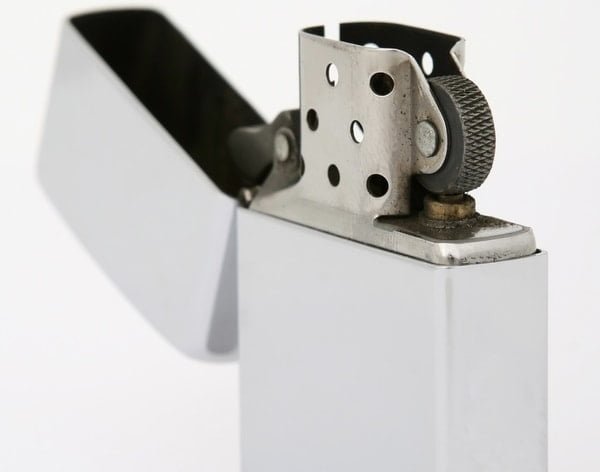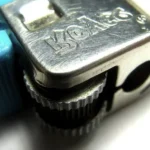Inside of a Gas Lighter
Gas lighter is a commonly used device in every household, but have you ever wondered what’s inside a gas lighter? How does it work? An inquisitive mind always digs into the answers to such questions, and here we present you a detailed insight into what’s inside a gas lighter.

Internal structure
The gas lighter is designed based on the principle of piezoelectric effect, which in simple language is known as the conversion of mechanical tension into an electric signal. In a cylindrical gas lighter, a piezoelectric crystal is placed inside, which can also be called the heart or the main functioning organ of the device. It is connected at one end of the spring, whose other end is attached to a wire hammer. This intricate arrangement is made in such a way that when you press force on the lighter, it pushes the hammer, which in turn hits the piezoelectric crystal, leading to an electric discharge that you can see at the tip of the lighter in between the two metallic points.
This ionizes the air present in the small gap and paves a pathway for the discharge. This electric discharge is the blue spark that ignites the stove or creates a flame. Usually, lead zirconate titanate crystals are used for piezoelectric ceramics due to their cost-effective and high sensitivity nature.
The list of parts that make up a gas lighter is:
- Hammer
When you open the steel casing structure of the lighter, you’ll see a plastic tubular structure containing the hammer and spring assembly. The plastic formation holds both of these parts together. The reason you’ll see it forming a telescopic structure is that it generates the massive force required to hit the piezo crystal. There are two springs with a strong metal rod holding the hammer at the end. The outer spring works to operate the push button while the innerspring loads the metal rod to create a spark.
2. Latch
The safety latch holds the inner sprint assembly together. When you press the push button with full force, the latch hits the plastic assembly making a click sound. The metal ring at the end protects it from any potential damage when the metal rod collides with the impact pad.
3. Piezo assembly
The piezo assembly is another part of what’s inside a gas lighter that holds three separate parts in a hierarchical order; impact pad, piezoelectric crystal, and ignition head. The impact plays the role of hearing the force coming from the hammer and passes it on to the piezoelectric crystal to form a spark. It is in the shape of a cone and is made up of brass to bear the blow. The piezoelectric crystal is in a cylindrical shape which is responsible for producing the voltage. Other than the lead zirconate titanate, it is also made up of quartz, sodium potassium tartrate, and tourmaline. This crystal is more like a battery that the lighter needs to operate. If it ends, you’d need a refill or purchase a new lighter. Lastly, the ignition head is the end part of the lighter from where the spark travels to the stove burner. The piezoelectric crystal produces a high voltage which discharges a spark. This part of the lighter is made up of steel or aluminum to amplify the effect of the impact pad.
Why is your spark blue?
What’s inside of a gas lighter is an intricate design that is invisible to the naked eye. All that’s visible is a blue-colored spark between the metal points to ignite the combustible gas stove. However, the color of the spark doesn’t necessarily have to be blue. It depends upon the gas in between the metallic points. If the gas is helium, the spark will be red in color, and if it’s sodium, you’ll see a vibrant yellowish-orange spark.
We see a blue spark because most of our household lighters have a small gap in between the metallic points occupied by the surrounding air. As the air is made up of nitrogen which creates the path for electric discharge, the lighters show a blue spark. It is also due to this very reason that the flames we see on our burners are also blue.



